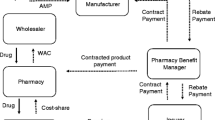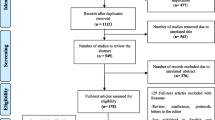Abstract
The introduction of expensive disease-modifying agents for the treatment of multiple sclerosis (MS) has created the potential for patients with MS to become higher contributors to healthcare spending. In an attempt to make formulary and reimbursement choices for these agents, decision-makers may look to the literature for guidance. This critical review attempts to decipher a consistent message from the available economic literature regarding the relationship between disease severity and cost in MS. In the 2 studies that have examined MS disease severity, a positive correlation with total (direct and indirect) cost, indirect cost and some, if not all, components of direct cost was reported. In studies taking the societal perspective, the majority of total costs were indirect. This paper documents the high burden of MS on society and serves to guide the decision-maker in interpreting the MS economic literature such that this information can be optimally utilised to make informed resource allocation decisions.
Similar content being viewed by others
References
Weinshenker BG, Rice GPA, Noseworthy JH, et al. The natural history of multiple sclerosis: a geographically based study. IV: applications to planning and interpretation of clinical therapeutic trials. Brain 1991; 117: 1057–67
Sadovnick AD, Ebers GC. Epidemiology of MS: a critical overview. Can J Neurol Sci 1993; 20: 17–29
Dalmady-Israel C. Multiple sclerosis. In: DiPiro JT, Talbert RL, Yee GC, et al., editors. Pharmacotherapy: a pathophysiologic approach. 3rd ed. Stamford (CT): Appleton & Lange, 1997: 1167–77
Matthews WB, editor. McAlpine’s multiple sclerosis. 2nd ed. New York (NY): Churchill Livingstone, 1991
Johnson KP, Brooks BR, Cohen JA. Copolymer 1 reduces relapse rate and improves disability in relapsing-remitting multiple sclerosis: results of a phase III multicenter, double-blind, placebo-controlled trial. Neurology 1995; 45: 1268–76
Paty DW, Li DKB, UBC MS/MRI Study Group, IFNB Multiple Sclerosis Study Group. Interferon beta-1b is effective in relapsing- remitting multiple sclerosis. II: MRI analysis results of a multicenter, randomized, double-blind placebo-controlled trial. Neurology 1993; 43: 662–72
IFNB Multiple Sclerosis Study Group. Interferon beta-1b is effective in relapsing-remitting multiple sclerosis: clinical results of a multicenter, randomized, double-blind, placebo-controlled trial. Neurology 1993; 43: 655–61
Gonsette, RE. Guidance on new therapies in MS patients [letter]. Lancet 1996; 348: 136
Inman RP. Disability indices, the economic costs of illness, and social insurance: the cost of MS. Acta Neurol Scand Suppl. 1984; 705: 46–55
Bourdette DN, Prochazka AV, Mitchell W, the VA Multiple Sclerosis Rehabilitation Study Group, et al. Health care costs of veterans with multiple sclerosis: implications for the rehabilitation of MS. Arch Phys Med Rehabil 1993; 74: 26–31
Lechtenberg R. Multiple sclerosis fact book. Philadelphia (PA): FA Davis, 1988
Holmes BA, Madgwick T, Bates D. The cost of MS. Br J Med Econ 1995; 8: 181–93
Blumhardt LD, Wood C. The economics of MS: a cost of illness study. Br J Med Econ 1996: 10: 99–118
Bradley EM, Thompson RP, Wood PHN. The prevalence and severity of major disabling conditions: a reappraisal of the government social survey on the handicapped and impaired in Great Britain. Int J Epidemiol 1978; 7: 175–81
Asche CV, Ho E, Chan B, et al. Economic consequences of MS for Canadians. Acta Neurol Scand 1997; 95: 268–74
Health Canada. National expenditures in Canada: 1975-1993. Ottawa (ON): Supply and Services Canada, 1994. Catalogue no.: H21–99
Statistics Canada. Income distributions by size in Canada, 1993. Ottawa (ON)0: Statistics Canada, Household Surveys Division, 1994. Catalogue no.: 13–207
Ontario Ministry of Health. Ontario health survey (OHS) user’s guide. Vol 2: Microdata manual. Toronto (ON): Queen’s Printer, 1993
Sketris IS, Brown M, Murray TJ, et al. Drug therapy in multiple sclerosis: a study of Nova Scotia Senior Citizens. Clin Ther 1996; 18 (2): 303–18
Brown MG, Murray TJ, Fisk JD, et al. A therapeutic and economic assessment of interferon beta in multiple sclerosis. Halifax (NS): Dalhousie Multiple Sclerosis Research Unit, 1996
Runmarker B, Andersen O. Prognostic factors in a multiple sclerosis incidence cohort with twenty-five years of follow-up. Brain 1993; 116: 117–64
IFNB Multiple Sclerosis Study Group, University of British Columbia, MS/MRI Analysis Group. Interferon beta-1b in the treatment of multiple sclerosis: final outcome of the randomized controlled trial. Neurology 1995; 45: 1277–85
Author information
Authors and Affiliations
Rights and permissions
About this article
Cite this article
Grudzinski, A.N., Hakim, Z., Cox, E.R. et al. The Economics of Multiple Sclerosis. Pharmacoeconomics 15, 229–240 (1999). https://doi.org/10.2165/00019053-199915030-00003
Published:
Issue Date:
DOI: https://doi.org/10.2165/00019053-199915030-00003




